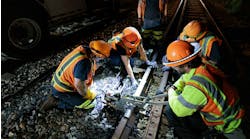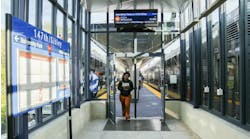MTA’s G Line to enter phase 3 of signal modernization work Aug. 12
Phase 3 of the signal modernization work on the Metropolitan Transportation Authority’s (MTA) G Line will begin on Aug. 12 and continue through Sept. 3.
The G Line train’s signal system dates back to the 1930s and is now being modernized with communications-based train control (CBTC) ,which will bring more reliable service to the 160,000 riders who take the G Line every day. Once the project is completed, the G Line will be the third line in the subway system to be fully converted to CBTC, following the L Line and the 7 Line.
“We’re transforming the subway with a modern signal system that will deliver faster and more reliable service for generations to come,” said MTA Chair and CEO Janno Lieber. “I’m proud of the successful shuttle bus operation New York City Transit has delivered to keep G Line train customers moving throughout the duration of this project.”
“We appreciate customers’ understanding as we work to modernize a signal system that dates back to the FDR administration and we’re delivering this project better, faster and cheaper with phased outages that ensure we get this critical work finished as efficiently as possible,” said MTA Construction & Development President Jamie Torres-Springer.
In Phase 1 and 2, MTA says the project team completed critical construction milestones, including the complete reconstruction of the train interlocking between 21st St. and Court Square. The infrastructure hadn't received an upgrade in more than 30 years and had fallen into a state of disrepair. The agency notes that in comparison, the new interlocking includes 3,000 feet of new third rail and more than 50 miles of new cables to support a new fiber optic and wireless communications system.
Construction crews also added a new track lubrication infrastructure to reduce train noise for a quieter and smoother ride and all three phases implement modern composite railroad crossties, which are much more resilient to water infiltration than the traditional wooden ones. Approximately 100 construction crew members per shift worked around the clock to complete the new interlocking in two weeks.
Phase 3 begins with curved track replacement between Bergen Street and Hoyt Street. MTA notes this section of track requires G Line trains to make a very sharp turn, which causes a lot of wear and tear on the rail and train wheels.
At the start of the work, the MTA launched a comprehensive customer service campaign to support riders. Hugo Zamora was appointed as the G Line train czar to oversee real-time communication with G Line train customers. Zamora ensures reliable alternative bus shuttle service is available and is empowered to make real-time adjustments to service to meet customers’ needs.


